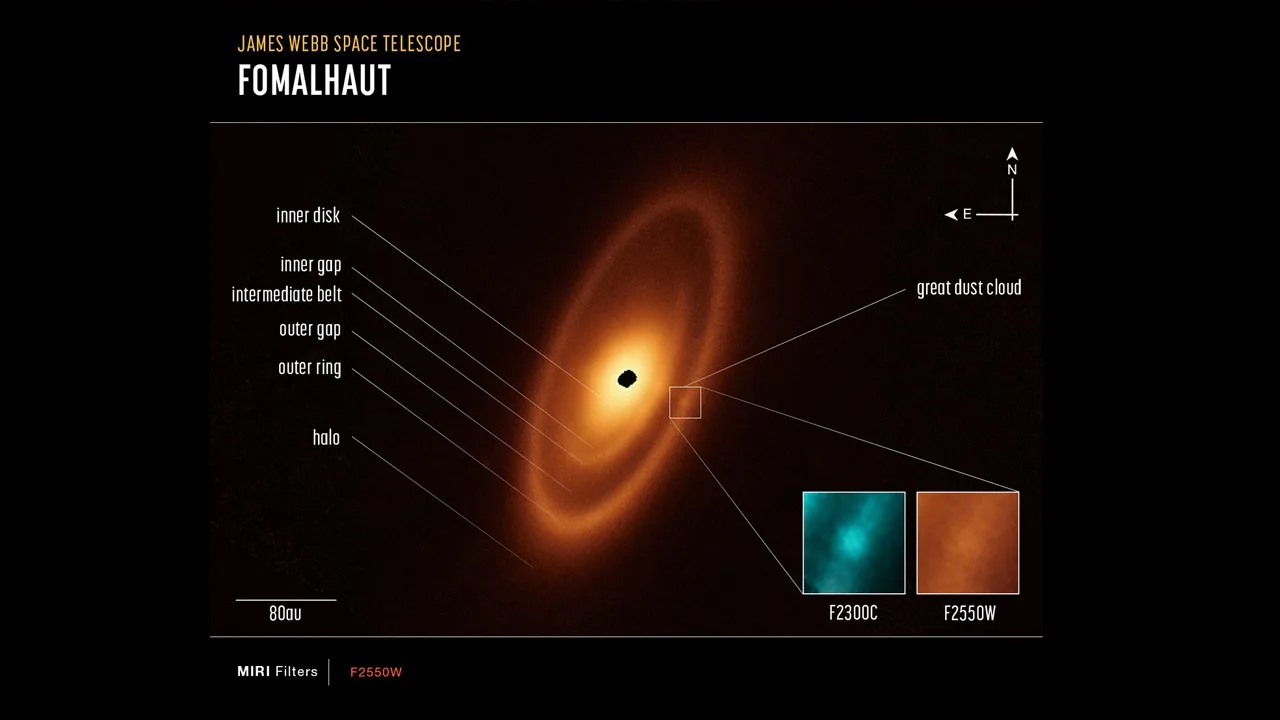
JWST captures images of the first asteroid belts seen beyond the Solar System – By Igor Bonifacic (Engadget) / May 8, 2023
One of the belts suggests the presence of undiscovered planets in the Fomalhaut system.
About 25 light years away from Earth lies Fomalhaut, one of the brightest stars in the night sky. The Fomalhaut system has captivated astronomers for decades, but it’s only now that we’re developing a better understanding of it thanks to the James Webb Space Telescope. In a study published in the journal Nature Astronomy on Monday, a group of scientists made up primarily of astronomers from the University of Arizona and NASA’s Jet Propulsion Laboratory say the Fomalhaut system is far more complex than previously thought.
Since 1983, astronomers have known the 440 million-year-old Fomalhaut is surrounded by dust and debris, but what they didn’t expect to find was three different debris fields surrounding the star. One of those, the closest to Fomalhaut, is similar to our solar system’s asteroid belt but far more expansive than expected. As the New Scientist explains, Fomalhaut’s inner asteroid belt stretches from about seven astronomical units from the star to about 80 astronomical units out. To put those numbers in perspective, that’s about 10 times broader of an inner asteroid belt than astronomers expected to find.



















